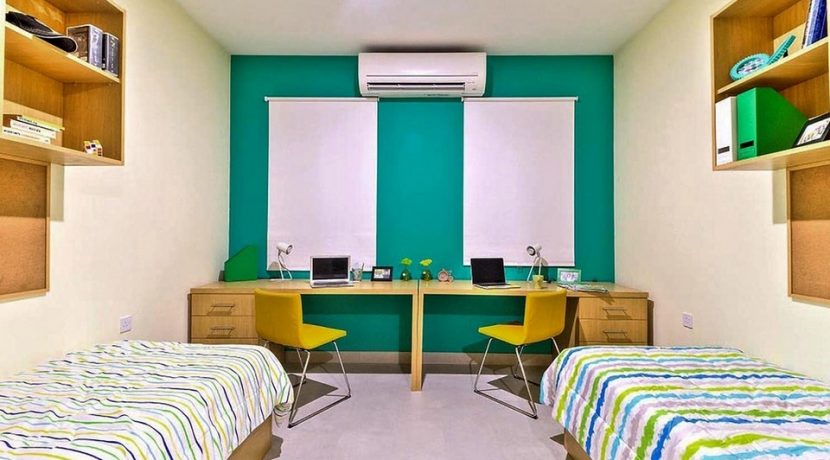The growth that has taken place in the United Kingdom’s student population over the past 15 to 20 years has quite literally reshaped cities, with purpose-built student accommodation (PBSA) providers either restoring old buildings in industrial cities or reclaiming derelict sites and replacing them with student-filled towers.
Indeed, from being the preserve of a few specialist developers, student property has developed into an asset class of its own and a wave of private equity and institutional cash has poured into the sector.
Figures provided by the law firm Addleshaw Goddard state that £6 billion (Dh32.22bn) of investment was made in the UK’s student property sector last year – double the amount spent in the previous year and much more than was invested in the bigger and more mature US market.
The reason for this has been the returns on offer. Yields for properties let directly to students – as opposed to buildings controlled by academic institutions – stand at about 6 per cent, according to the property consultancy Savills.
“In the UK, every year since the economic downturn, student accommodation has seen positive rental growth,” says James Pullan, the head of Knight Frank’s UK student property business. “No other sector can say the same.”
Mr Pullan says that two simple factors were shaping the market. Firstly, increasing affluence has led to a rise in the middle classes across the world.
“There is increasing wealth from a range of different countries and one of the things they want to spend that money on is their own children and investing in higher education.”
The other is that there is a “structural undersupply of student accommodation”, Mr Pullan says.
“Universities everywhere have not provided for all of their students. In the UK, most universities provide for up to all of their first-year students and a proportion of their postgraduate students.”
The rest often live in subdivided homes or flats originally provided for families.
One of the pioneers of the UK’s student property market was Nicholas Porter, who founded the Unite Group in 1991. Over the next 15 years, he turned it into the biggest student landlord in the UK, set up a huge investment fund and floated the company on the UK stock market. By the time he stood down as its chief executive in 2006, it had more than 3,000 staff.
Two years after his departure from Unite, Mr Porter settled in Dubai, which is now the base for his attempt to replicate the model created in the UK on an international scale through his Global Student Accommodation (GSA) Group.
It initially focused on the Australian and London market through a brand known as Urbanest but Mr Porter sold his stake in that business to his former partners.
His focus now is on the Asian market, continental Europe and on Dubai, which he sees as a hub for higher education with a catchment stretching from South Asia across the GCC and into Africa.
He says he recognised during 2006-2007 that the globalisation trend that had disrupted so many markets was also taking place in higher education.
“When I started, there were 68 million people in higher education. We’re getting closer to 200 million now and in the next 10 years we’ll have another 80 million or so coming in.
“And it’s truly globalising. There are brands of universities, who want to take education and learning to the world.” Indeed, a report published by Savills in October on the global student property market highlighted Dubai’s importance in this regard.
“The greatest concentration of branch universities in the world is in Dubai,” the report said, pointing to the more-than 30 branch campuses of universities from 11 countries setting up a branch in the emirate.
All rights reserved to the initial publisher for thenational.ae
Collected and published by Arms &McGregor International Realty® editorial team. Get in touched with us at [email protected].

